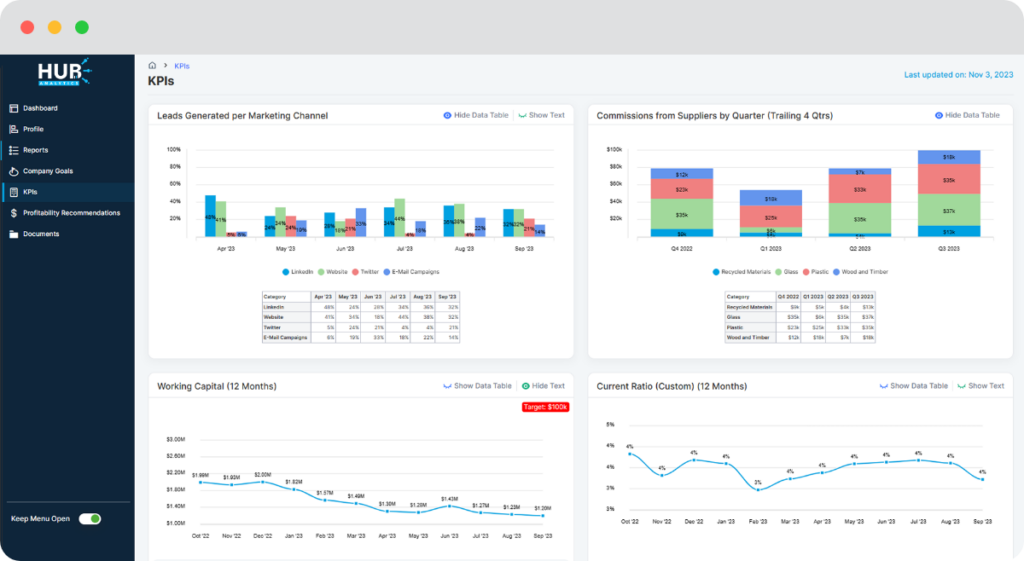Learn about crucial metrics and KPIs to optimize your operations and boost profitability.
Metrics, or Key Performance Indicators (KPIs), are measurable values that provide insights into the performance and health of your wholesale business. By tracking these indicators, you can make informed decisions and steer your company toward success.
In the wholesale industry, tracking key metrics is essential for effective management. These metrics range from inventory control to sales performance, helping businesses stay competitive and profitable.
Analyze the percentage of website visitors who complete a desired action, such as making a purchase. A high conversion rate indicates effective marketing and user experience.
(Number of Conversions / Number of Visitors) x 100
Understand the average value of each order, helping you optimize pricing strategies and identify opportunities to increase revenue.
Total Revenue / Number of Orders
Determine the cost of acquiring a new customer, crucial for evaluating the efficiency of your marketing campaigns.
Total Marketing and Sales Expenses / Number of New Customers
Track the percentage of visitors who add items to their cart but leave before completing the purchase, offering insights into potential friction points.
(Number of Abandoned Carts / Number of Carts Created) x 100
Measure the profitability of marketing campaigns by comparing the net profit to the cost of the investment.
(Net Profit from Investment / Cost of Investment) x 100

Evaluate the total revenue generated by a customer throughout their entire relationship with your business, guiding long-term customer engagement strategies.
Average Purchase Value x Average Purchase Frequency x Average Customer Lifespan
Assess the percentage of visitors who navigate away from your site after viewing only one page, providing insights into website engagement.
(Number of Single-Page Sessions / Total Sessions) x 100
Calculate how quickly inventory is sold, aiding in inventory management and preventing overstock or stockouts.
Cost of Goods Sold (COGS) / Average Inventory
Measure the rate at which customers stop doing business with your company over a given period, helping you identify and address customer retention issues.
(Number of Customers Lost / Total Customers at the Start) x 100

Evaluate likes, comments, shares, and other interactions on social media platforms, indicating the effectiveness of your social media marketing efforts.
Assess the percentage of mobile users who complete desired actions on your site, ensuring a seamless mobile shopping experience.
(Number of Conversions from Mobile / Number of Mobile Visitors) x 100
Measure the percentage of recipients who open your email campaigns, providing insights into the effectiveness of your email marketing strategy.
(Number of Emails Opened / Number of Emails Sent) x 100
Monitor the time it takes for your website pages to load, as faster load times contribute to a better user experience and higher search engine rankings.
Evaluate the cost incurred each time a user clicks on your online advertisement, guiding your budget allocation for paid advertising.
Total Cost of Ad Campaign / Number of Clicks
Track the percentage of abandoned checkouts that are successfully recovered, optimizing strategies to minimize lost sales.
(Number of Recovered Checkouts / Number of Abandoned Checkouts) x 100
Choosing the right metrics for your business involves understanding your goals and aligning them with the indicators that matter most. Tailor your approach based on your unique business model, market, and customer needs.
Implementing a robust analytics platform like HUB can simplify metric tracking. Monitor wholesale metrics effortlessly, gaining actionable insights for strategic decision-making.